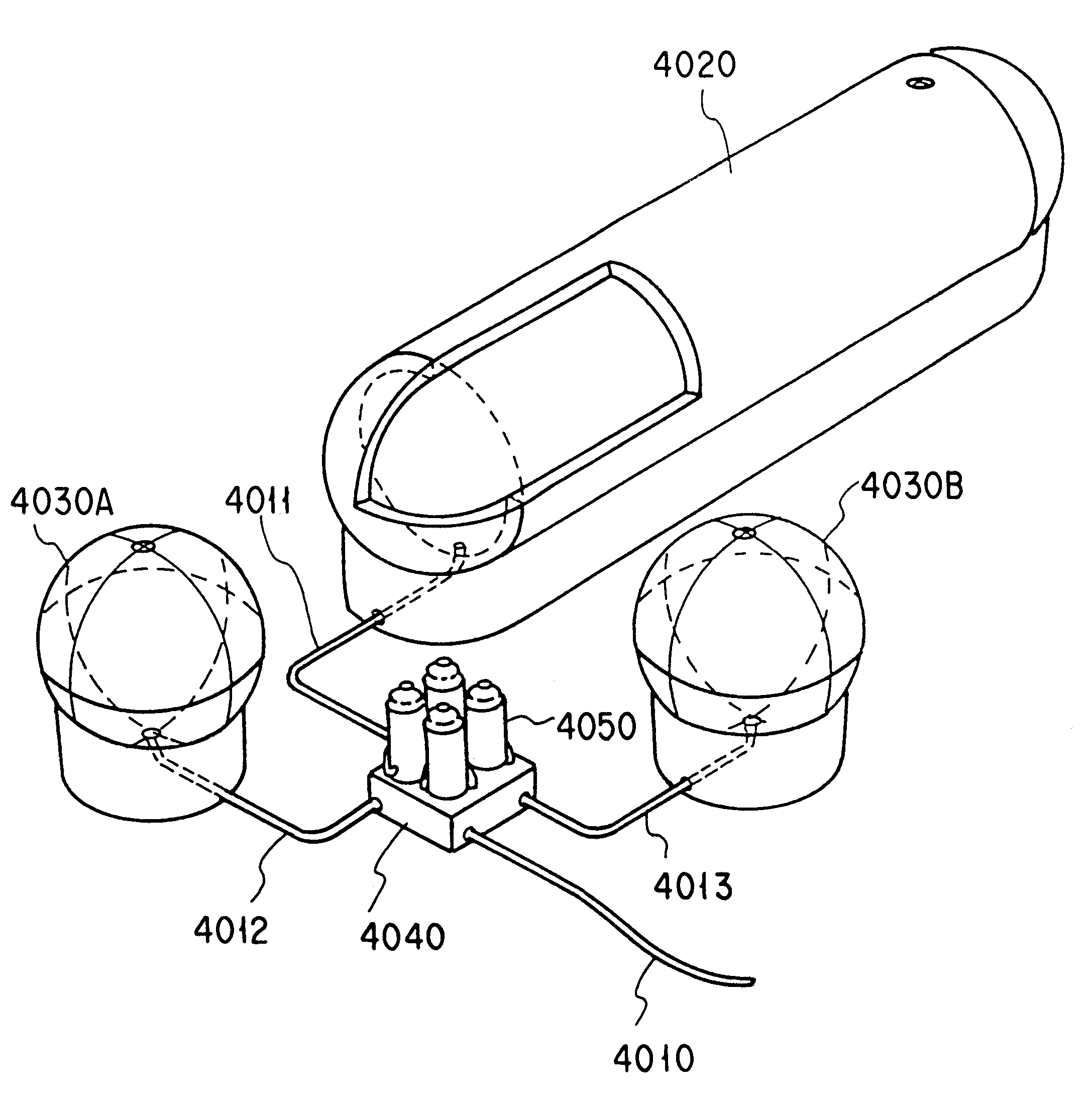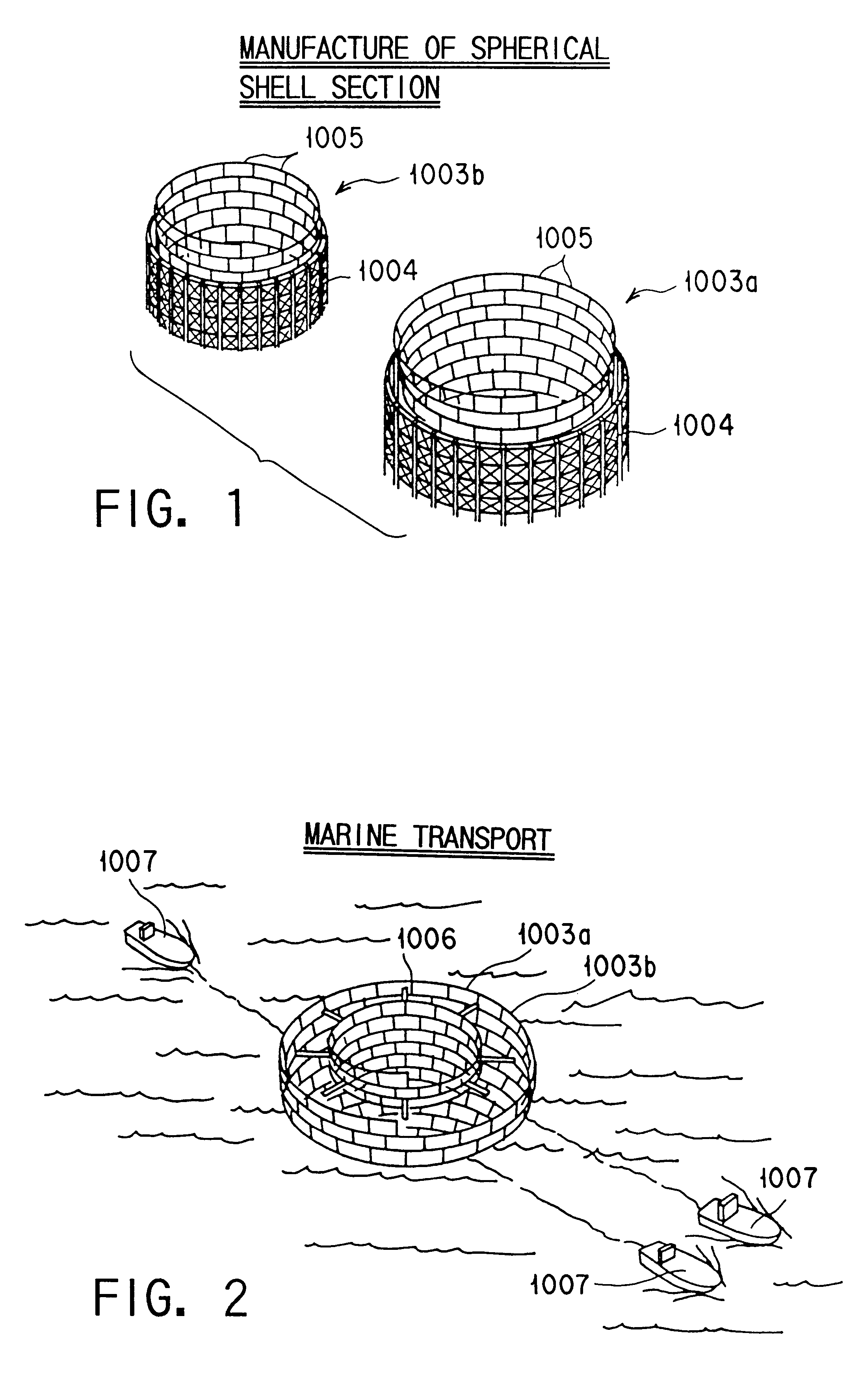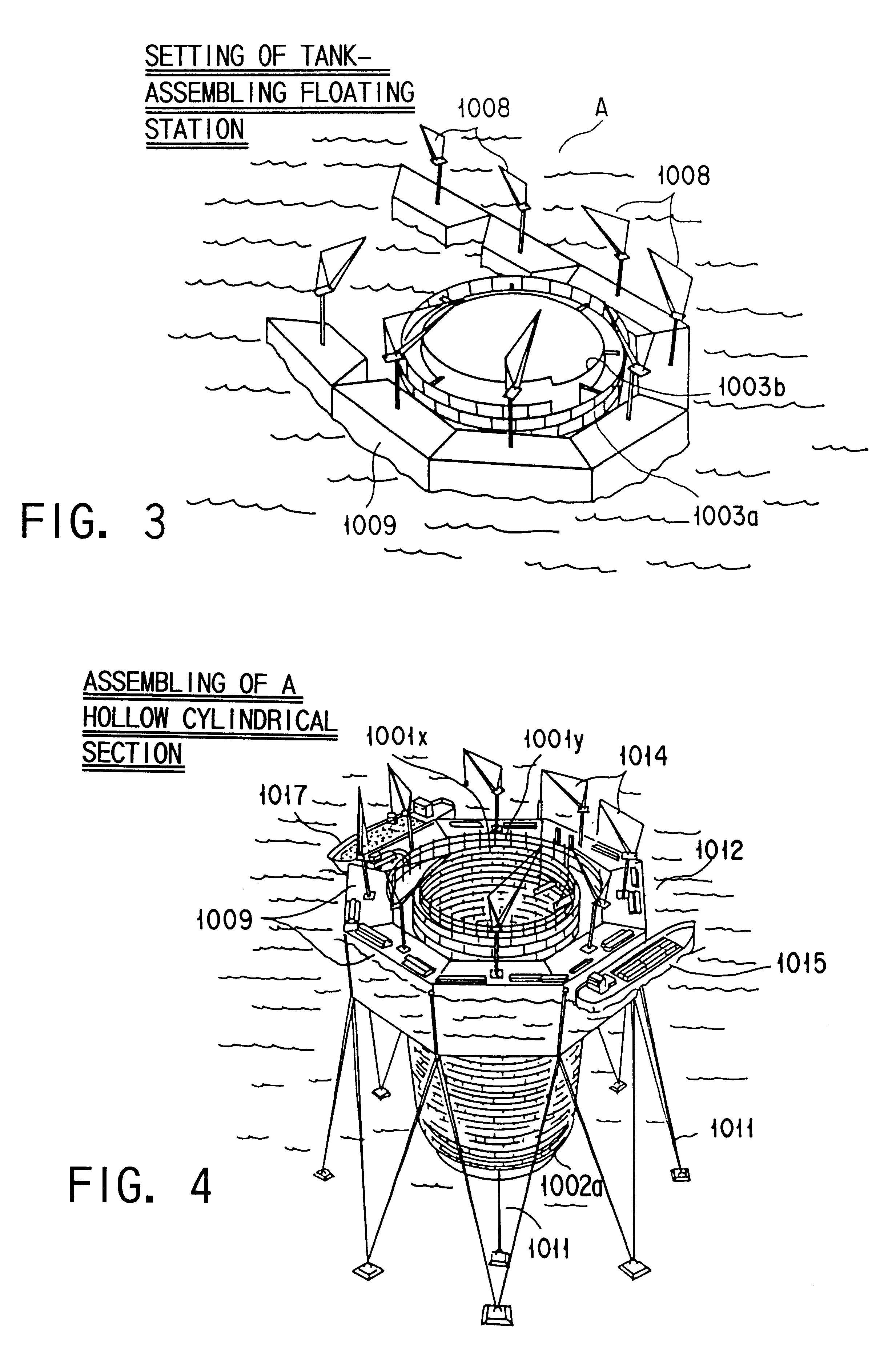Submarine power storage system
a power storage system and submerged technology, applied in the direction of caissons, drilling pipes, artificial islands, etc., can solve the problems of limited space, environmental disruption, limited size of the tank that can be built on land, etc., and achieve the effects of simple structure, high energy saving, and high energy saving
- Summary
- Abstract
- Description
- Claims
- Application Information
AI Technical Summary
Benefits of technology
Problems solved by technology
Method used
Image
Examples
embodiment 1
A method of building a large tank, which is an embodiment of the invention, will be described with reference to FIGS. 1 to 13.
This embodiment is a method of building a large cylindrical tank on the seabed, in a horizontal position.
As shown in FIGS. 12 and 13, the large tank 1001a is a horizontal cylindrical tank. It comprises a cylindrical section 1001 and spherical shell sections 1002a and 1002b connected to the ends of the cylindrical section 1001. The cylindrical section 1001 is a cylindrical double wall made of, for example, steel plates 1014. The space in the double wall is filled with concrete. Each of the spherical shell sections 1002a and 1002b is made of a double wall composed of, for example, steel plates. The space in the double wall constituting either spherical shell section is filled with concrete.
To build the large tank 1001a, both spherical shell sections 1002a and 1002b are assembled on the land, for example in a factory as is illustrated in FIG. 1. More correctly, ...
embodiment 2
A combined system for deep-sea power storage and carbon dioxide dissolution, according to the second embodiment of the invention, will be described.
FIG. 14 shows the combined system for deep-sea power storage and carbon dioxide dissolution. FIG. 15 is a plan view illustrating a tank and electrical / mechanical component units incorporated in the system shown in FIG. 14. FIG. 16 is a sectional view taken along line III--III shown in FIG. 15. FIG. 17 is a sectional view taken along line IV--IV shown in FIG. 15.
As shown in FIG. 15, the combined system comprises a tank 2001 and a plurality of electrical / mechanical component units 2002, a transformer section 2004, and a carbon dioxide source 2006. For example, two electronic component units 2002 are provided adjacent to the tank 2001. The transformer section 2004 is installed on the ground and connected to the units 2002 by a submarine cable 2003, for controlling the power storage and power generation performed in each unit 2002. The carbo...
embodiment 3
FIG. 18 is a diagram illustrating a deep-sea power storage system according to the present invention. As shown in FIG. 18, the system comprises a system body 3001 installed on the seabed 3002.
The system body 3001 is connected by a submarine cable 3004 to a ground facility 3003 installed on the ground. An operator stationing in the ground facility 3003 remotely controls the system body 3001, thereby accomplishing maintenance work including routine inspection and routine oiling, causing the system body 3001 to dive and float, and switching the operating mode between the power-generating mode and the power-storing mode.
In the figure, numeral 3005 designates a support diving vehicle, in which the personnel perform maintenance on the system body 3001 immediately after the body 3001 has been installed.
FIG. 19 shows the system body 3001. The system body 3001 has a battery tanks 3011 and electrical / mechanical component containers 3012 (two tanks as shown in FIG. 19). The battery tank 3011 a...
PUM
 Login to View More
Login to View More Abstract
Description
Claims
Application Information
 Login to View More
Login to View More - R&D
- Intellectual Property
- Life Sciences
- Materials
- Tech Scout
- Unparalleled Data Quality
- Higher Quality Content
- 60% Fewer Hallucinations
Browse by: Latest US Patents, China's latest patents, Technical Efficacy Thesaurus, Application Domain, Technology Topic, Popular Technical Reports.
© 2025 PatSnap. All rights reserved.Legal|Privacy policy|Modern Slavery Act Transparency Statement|Sitemap|About US| Contact US: help@patsnap.com



